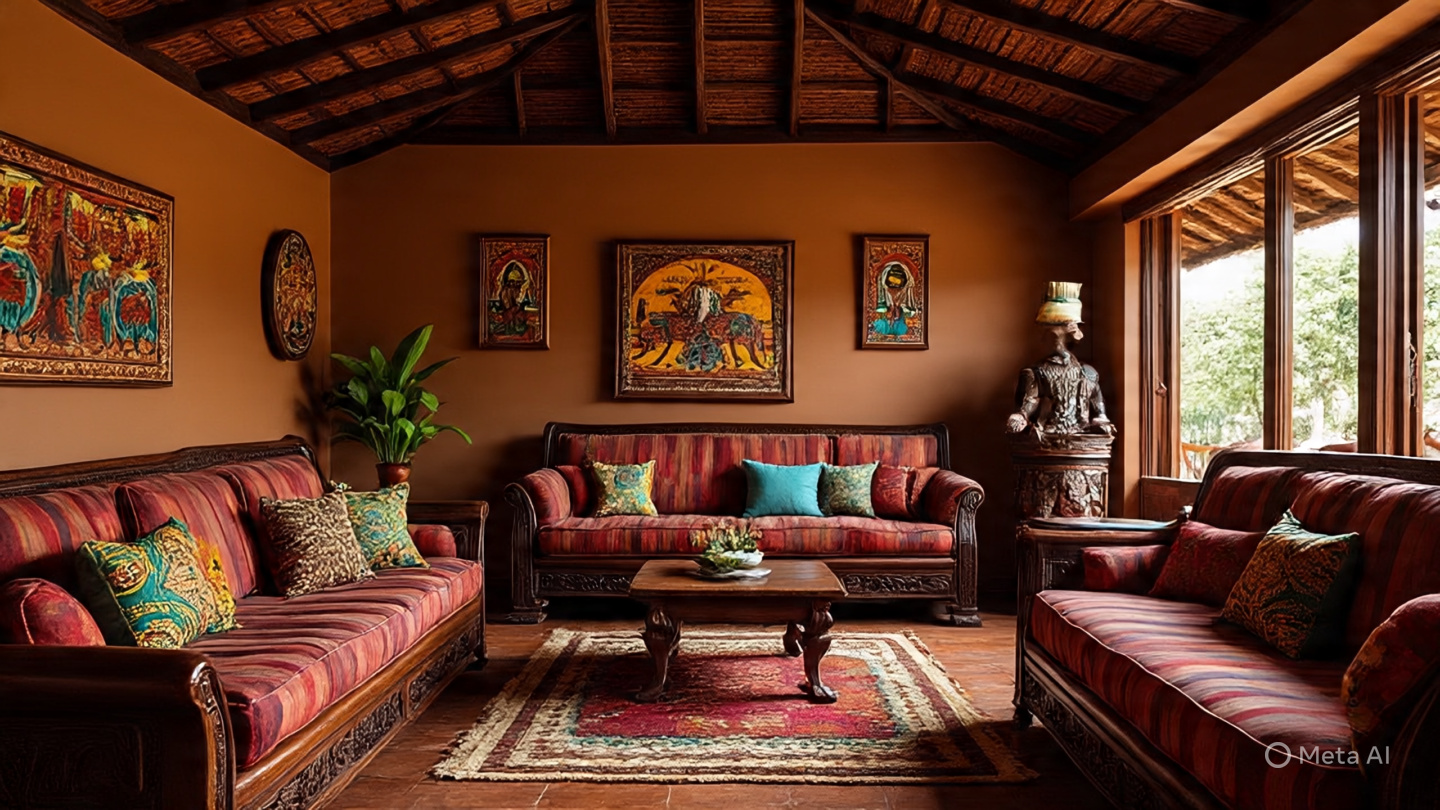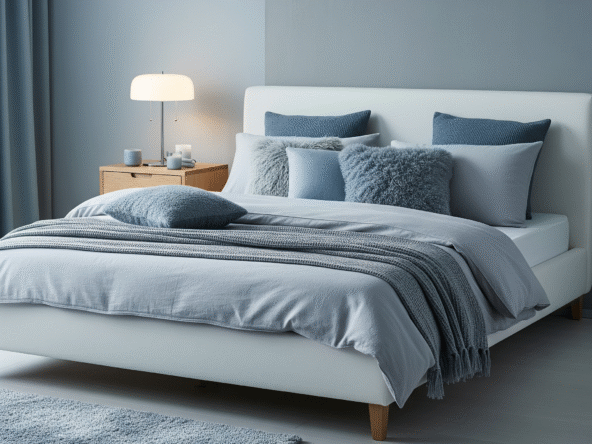Color is one of the most powerful tools in interior design—it can energize, calm, expand, or cozy up a space. Whether you’re decorating a new house in Nairobi or refreshing an apartment in Kigali, choosing the right room colour design is critical to creating a space that feels truly yours.
In this article, we’ll explore how East African homeowners can choose color palettes that fit their style, lighting conditions, and room purpose. Whether you’re painting walls, picking curtains, or selecting furniture, this guide will help you make confident color choices that reflect both personality and practicality.
1. The Role of Color in Interior Design
Color influences:
- Mood: Warm colors energize, cool tones relax.
- Perception: Light colors make small rooms feel larger.
- Light reflection: Bright colors enhance lighting, darker tones absorb it.
- Temperature: Warm hues can make cool rooms feel cozy.
In East Africa, where the sun is strong and rooms often rely on natural home lighting, understanding how color behaves in light is especially important.
2. Understand the Basic Color Categories
a) Warm Colors
- Red, orange, yellow
- Stimulating and vibrant
- Ideal for social spaces like living rooms and dining areas
b) Cool Colors
- Blue, green, purple
- Calming and soothing
- Great for bedrooms and bathrooms
c) Neutral Colors
- White, beige, grey, taupe
- Versatile and timeless
- Act as a canvas for other decor items
3. Factors to Consider Before Choosing Your Palette
a) Natural Light Availability
Homes in Mombasa or Kisumu may get more sunlight than apartments in Nairobi’s city center.
- Use cooler colors in brightly lit rooms to balance heat and glare.
- Use warmer tones in dimly lit spaces to add warmth and vibrance.
b) Room Size
- Use light colors like cream, soft blue, or pale grey to make small rooms feel bigger.
- Use deeper shades in larger rooms for a more intimate feel.
c) Flooring and Furniture
Coordinate paint and fabric choices with what you already own—tiles, wood finishes, sofas, curtains, etc.
4. Start with a Base Color
Pick one main (neutral) color to serve as the foundation for your space. This sets the tone for the rest of your palette.
Common neutral bases for East African homes:
- Beige or Taupe (goes well with wood finishes)
- Soft White (reflects light in small rooms)
- Warm Grey (balances modern and traditional elements)
Once you’ve chosen a base, layer with accent colors using furniture, rugs, or wall decor features.
5. Create a 60-30-10 Color Balance
A well-designed room often follows the 60-30-10 rule:
- 60%: Dominant color (walls or flooring)
- 30%: Secondary color (furniture, large décor)
- 10%: Accent color (art, pillows, lamps)
This structure ensures balance and cohesion.
6. Use Nature as Your Color Inspiration
Look to your environment for inspiration:
- Terracotta reds and browns of Maasai land
- Ocean blues from Lamu or Zanzibar
- Lush greens from tea farms in Kericho or Rwandan hills
These tones are not only beautiful but also culturally rooted and locally relatable.
7. Popular Room-Specific Color Ideas
Living Room
- Light grey with mustard accents
- Beige walls with navy and white furniture
- White walls with warm wood tones
Bedroom
- Soft green or lavender for calmness
- Earthy browns and terracotta for warmth
- Blue and white for a breezy feel
Kitchen
- Soft yellow for cheer
- Cool grey for modern style
- Olive green for rustic charm
Bathroom
- Aqua or sky blue for a spa-like feel
- White and grey for a clean look
8. Understand Paint Finishes
Paint isn’t just about color—it’s also about texture and sheen. Each finish serves a purpose.
- Matte or Flat: Non-reflective, hides wall imperfections. Ideal for ceilings or bedrooms.
- Eggshell or Satin: Slight sheen, easy to clean. Great for living rooms and hallways.
- Semi-gloss or Glossy: Reflective and moisture-resistant. Use in kitchens and bathrooms.
For rental homes, consider washable or low-VOC paints.
9. Try a Test Patch First
Before committing, paint a small wall section and observe how it looks in different light:
- Morning (natural light)
- Afternoon (brightest sunlight)
- Evening (artificial light)
This will help you avoid color regrets!
10. Mistakes to Avoid
- Picking color from a screen or catalog only
- Ignoring ceiling and trim colors
- Using too many bold colors in a small room
- Forgetting lighting’s effect on color
11. Tools and Apps to Help
Use free color palette tools like:
- Coolors.co – generates color schemes
- Dulux Visualizer or Jotun Colour Design – lets you preview paint colors on photos
- Pinterest or Instagram – search “East African interiors” or “living room colour ideas”
12. Where to Buy Paint in East Africa
Popular suppliers:
- Crown Paints (Kenya, Uganda)
- Sadolin Paints (Tanzania, Uganda, Rwanda)
- Basco Paints (Kenya)
- Jotun (available in premium home design shops)
You can also order online from:
- Jumia
- Copia
- Local hardware e-commerce platforms
Final Thoughts
Color is personal, cultural, and powerful. By understanding how it works with space, light, and purpose, you can turn any house or apartment in East Africa into a beautiful and functional sanctuary.
Whether you prefer bold color statements or soft, subtle tones, choosing the right room colour design will help your home reflect your taste and lifestyle—one brushstroke at a time.


